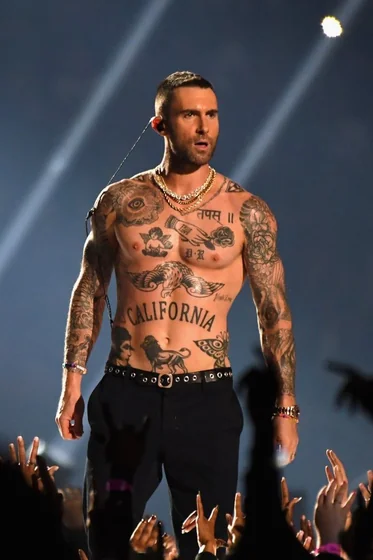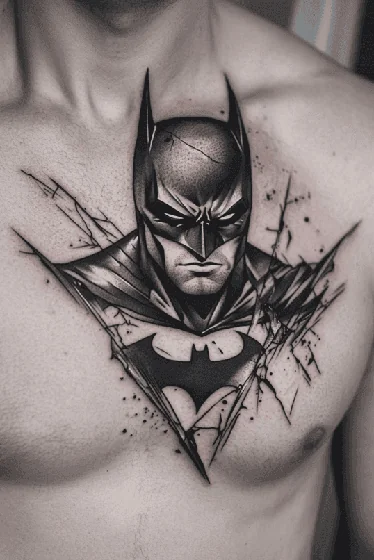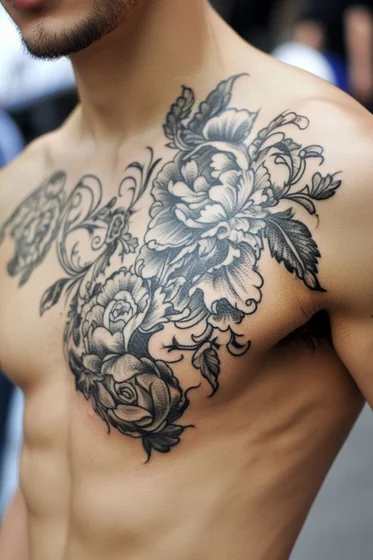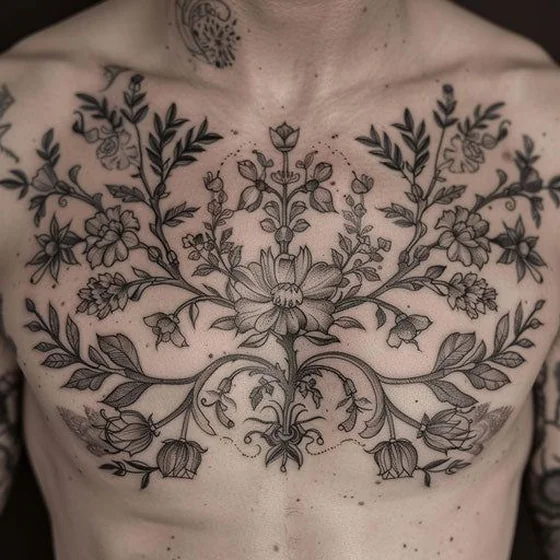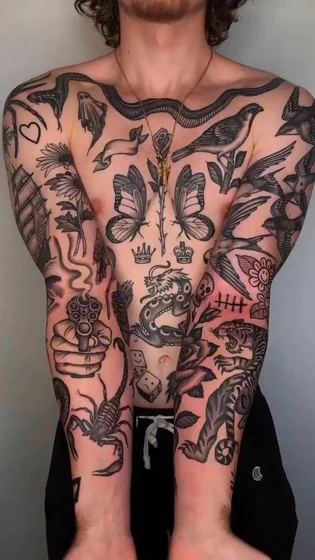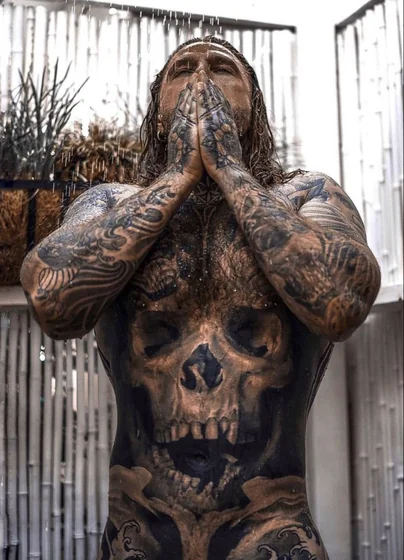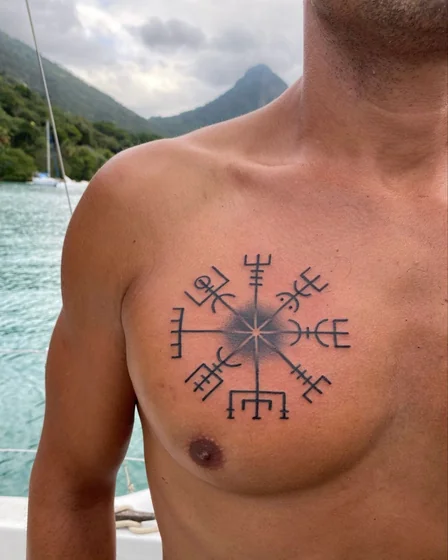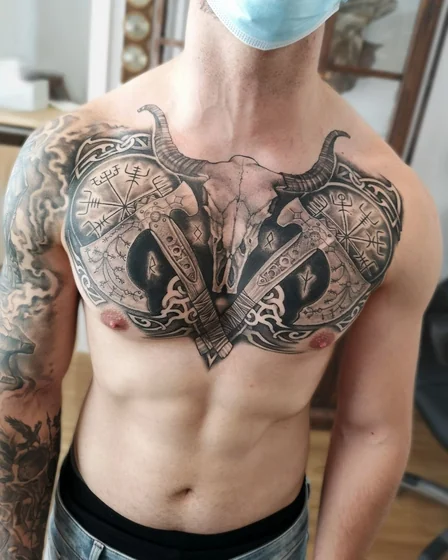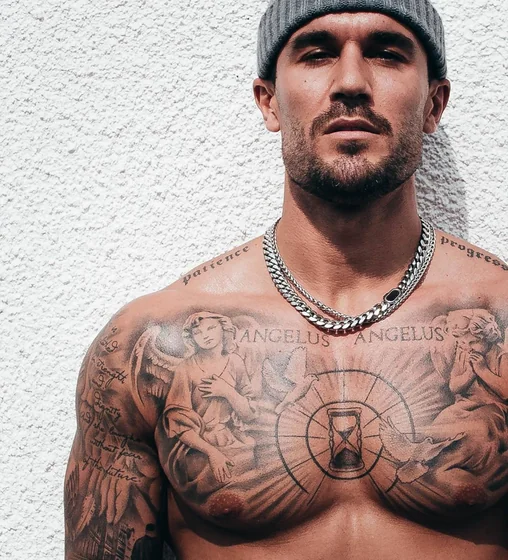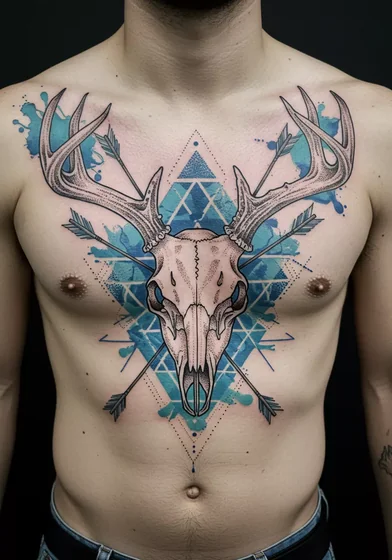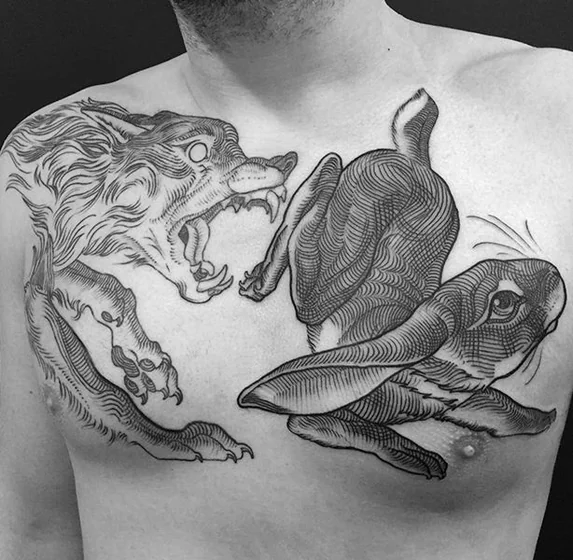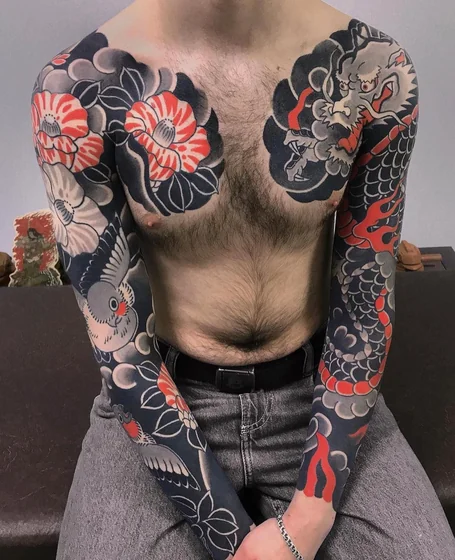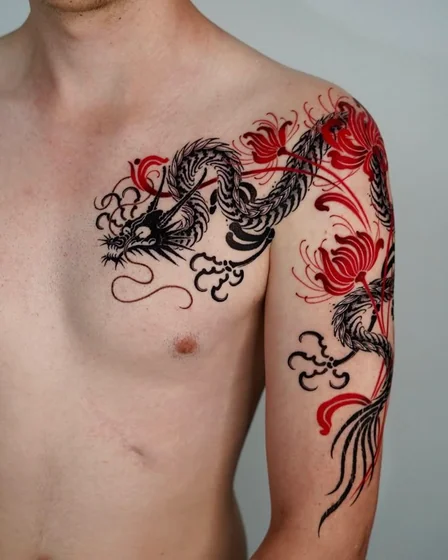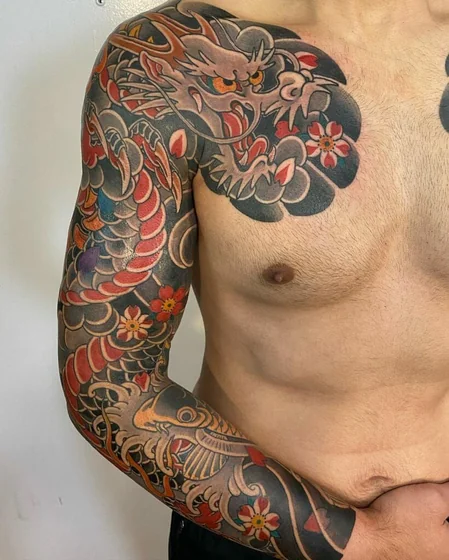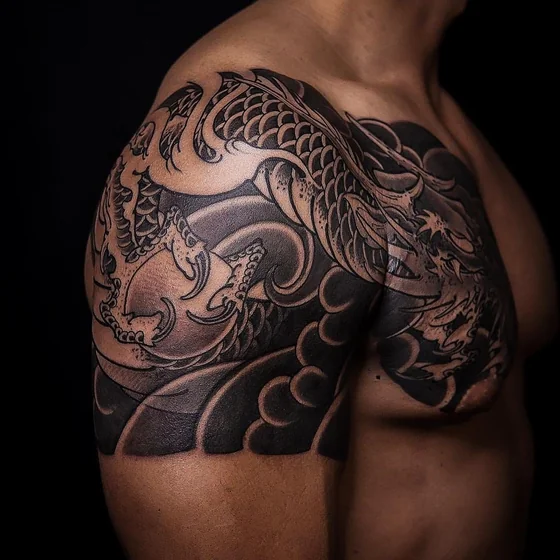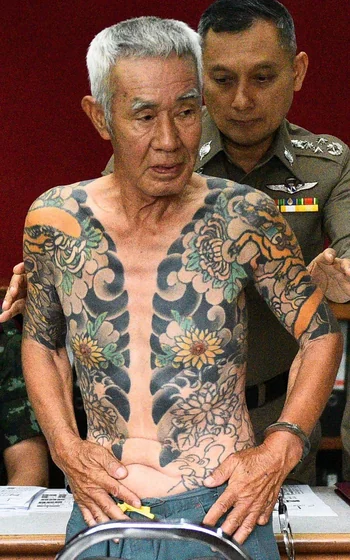Filters
Tattoo Ideas
3D Virtual Try-On
Stop guessing. See exactly how your tattoo will look on your body. Upload your design, and visualize it instantly.
- Realistic 3D skin simulation
- Multiple body positions
- Upload your own design
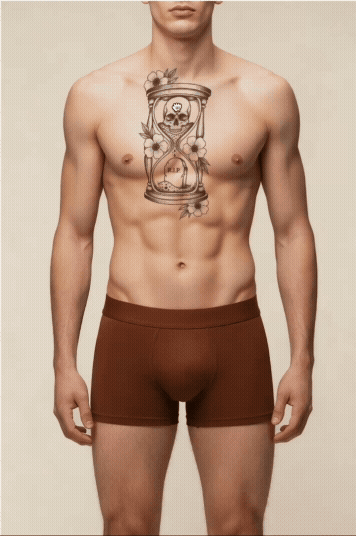
The Ultimate Symbol of Strength
A chest tattoo for men is the definitive "shield" of body art, utilizing the broad canvas of the pectorals and sternum to create a statement of power and resilience. Characterized by its dual nature—highly visible when shirtless yet completely concealable in professional attire—this placement is the gold standard for large-scale, masculine designs. Whether you opt for a single pectoral piece or a full "battle plate," chest ink fundamentally alters how your physique is perceived.
Visual Characteristics & Key Features
- Anatomical Enhancement: Expertly placed designs follow the natural curve of the pectoral muscle, making the chest appear wider and more muscular.
- The "Shield" Effect: Full chest panels often act as armor, utilizing symmetry to create a balanced, imposing look that draws the eye to the center of the torso.
- High-Contrast Durability: The chest skin (excluding the sternum) holds ink exceptionally well, allowing for bold blackwork and intricate shading that ages gracefully.
Expert Insights: Mastering the Male Canvas
Pain & Placement Strategy
Let's be real about the needle. The fleshy part of the pec is manageable (4-5/10), but the sternum and collarbone are notorious "bone-rattlers" (8-9/10). If you are new to ink, start with a focused piece on the upper pectoral. This allows you to test your limits without committing to a 20-hour full chest session immediately.
Physique Integration Tips
- For Muscular Builds: Use designs with "flow" (like Japanese waves or biomechanical) that move with the muscle flex. Avoid rigid straight lines that might warp when you pump up.
- For Leaner Frames: A chest piece that extends over the shoulders (traps) can create an illusion of broader width. Center-heavy designs (sternum focus) add density to your silhouette.
Style Recommendations
Traditional Americana, Blackwork, and Realism reign supreme here. The flat surface allows for incredible detail. However, remember that heavy chest hair can obscure fine lines—opt for bolder outlines if you don't plan on shaving regularly. Compare these structural approaches with designs for women to see how anatomical flow differs drastically between genders.
Explore More Masculine Styles
- Japanese Tattoo – Expand your chest piece into a full bodysuit with legendary Irezumi storytelling.
- Shoulder Tattoo – The perfect bridge to connect your pectoral ink to a sleeve.
- Tattoo Design Collection – Browse our complete library of high-quality stencils and concepts.
- Tattoo Ideas Collection – Find inspiration for your next session across all body parts.
- Best Tattoo Design Agent – Let AI generate a unique chest piece tailored to your muscle structure.
- Tattoo 3D Try On – See exactly how that chest panel looks on your body before the needle touches skin.
